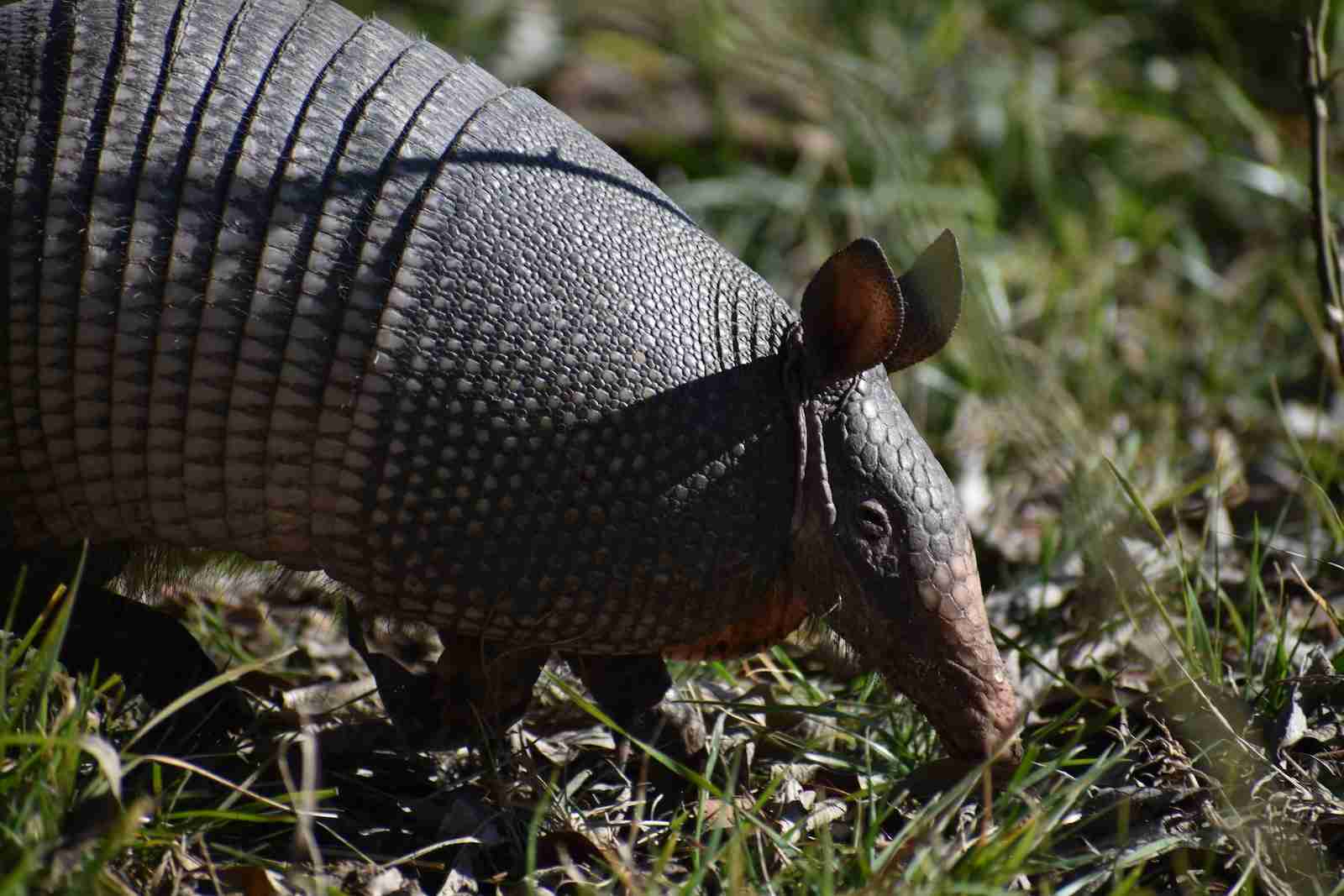23 Fun Facts About Armadillos You Never Learned in School
1. Armadillos are mammals that are native to the Americas.
Armadillos are a group of mammals that belong to the order Cingulata and are found in the Americas. They are characterized by their bony armor-like shell, which covers their head, back, and tail.
Armadillos are typically small to medium-sized animals, ranging from 5 inches to 5 feet in length, and they can weigh anywhere from a few ounces to over 100 pounds, depending on the species. They have short legs, sharp claws, and long snouts that they use to forage for food.
2. Armadillos are in the family Dasypodidae, part of the order Cingulata within the magnorder Xenarthra, which also includes sloths and anteaters.
Armadillos belong to the family Dasypodidae, which includes 20 species across eight genera. This family is the only one in the mammalian order Cingulata within the magnorder Xenarthra. Xenarthra also includes sloths and anteaters.
It’s worth noting that while scaly anteaters, or pangolins, resemble armadillos in their armored appearance, they belong to a different mammalian order, Pholidota, and are not found in the New World.
3. There are 20 different species of armadillos, ranging in size from 5 inches to 5 feet.
Armadillos come in a variety of sizes, from the tiny pink fairy armadillo, which is only 3-4 inches long, to the giant armadillo, which can grow up to 5 feet in length.
In total, there are 20 different species of armadillos, each with its own unique characteristics and behaviors. Some species are solitary, while others live in large social groups. Some armadillos are primarily nocturnal, while others are active during the day.
Despite their differences, all armadillos share certain traits, such as their bony armor-like shell and their omnivorous diet.
4. The word armadillo means little “armored one” in Spanish.
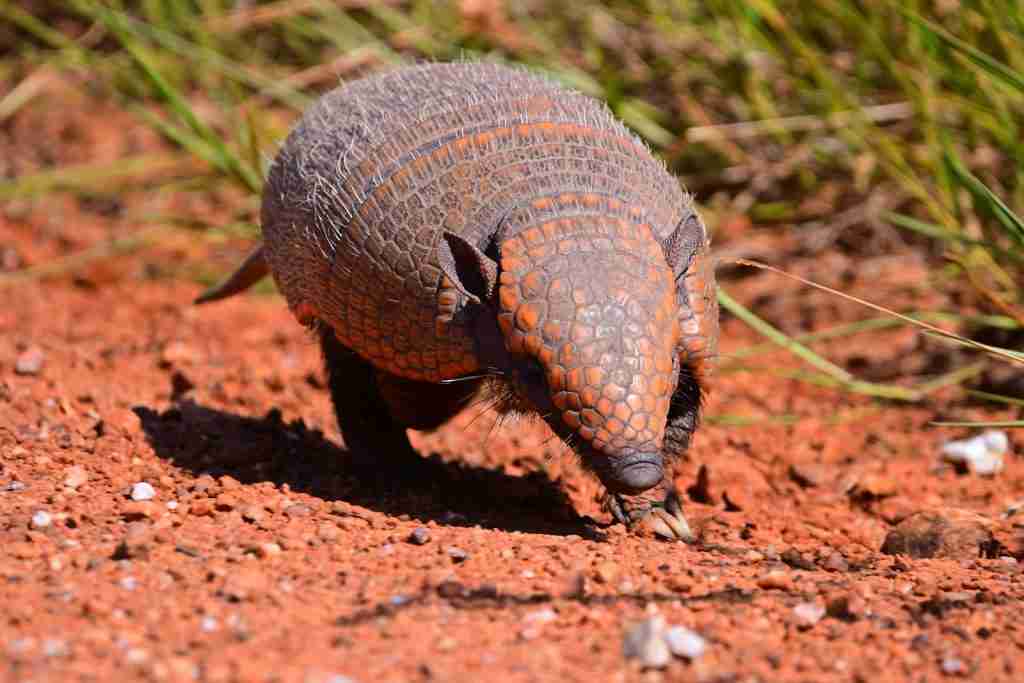
The name “armadillo” comes from the Spanish word “armado,” which means armored or armed. This name is a reference to the armadillo’s unique bony shell, which provides protection from predators.
Armadillos are known by many different names in different cultures and languages, but the name “armadillo” is the most commonly used.
In addition to its name, the armadillo is also known for its role in folklore and mythology, where it is often depicted as a symbol of protection or strength.
5. Armadillos are the only mammals that have a shell.
Armadillos are the only mammals that have a hard, protective shell made of bony plates. This shell is unique among mammals and is thought to have evolved as a defense mechanism against predators.
The bony plates are covered in a layer of skin and hair, which gives the shell a tough, armor-like appearance.
While the shell provides excellent protection, it also limits the armadillo’s mobility and makes it vulnerable to certain predators, such as dogs and coyotes.
6. Coyotes are the main predators of armadillos, followed by bobcats, cougars, wolves, bears, raccoons, and large raptors.
Coyotes are the primary predators of armadillos, with bobcats, cougars, wolves, bears, raccoons, and large raptors also posing threats. These predators play a crucial role in regulating armadillo populations and shaping their behavior. While coyotes are the most common predators, other carnivores, such as bobcats and cougars, also target armadillos for prey.
Additionally, larger predators like wolves, bears, and large raptors may opportunistically hunt armadillos when the chance arises. Raccoons, known for their opportunistic feeding habits, may also prey on armadillo juveniles or exploit their burrows for shelter.
7. Armadillos have poor eyesight but an excellent sense of smell.
Armadillos have relatively small eyes and poor eyesight, which makes it difficult for them to navigate their surroundings.
However, they have an excellent sense of smell, which they use to find food and locate potential mates.
Armadillos have long, sticky tongues that they use to capture insects, which make up a large part of their diet. In addition to insects, armadillos also eat small mammals, reptiles, and plants.
8. Armadillos are expert diggers and can create elaborate burrow systems.
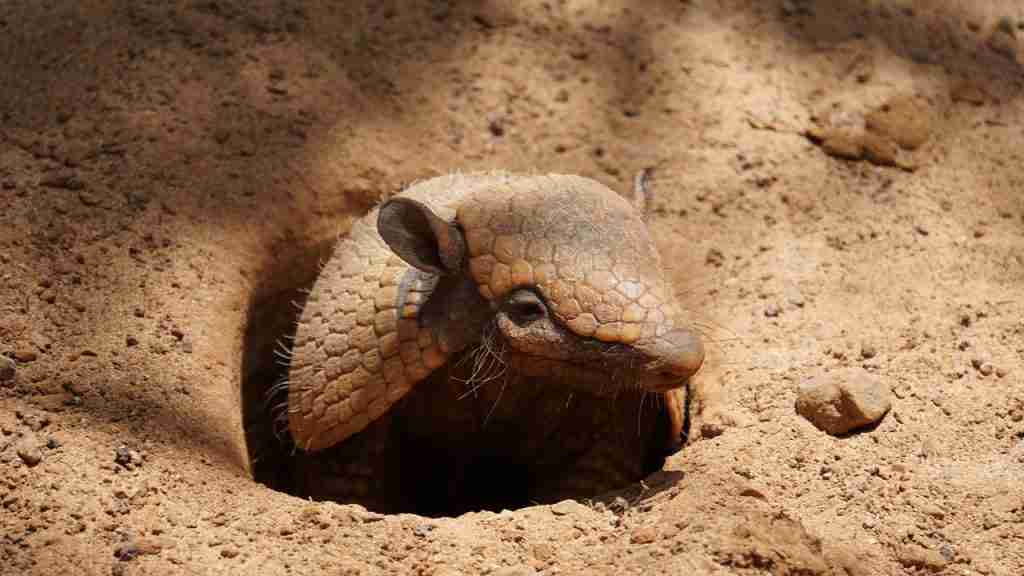
Armadillos are expert diggers and can create elaborate burrow systems that they use for shelter and protection.
Their strong claws and powerful legs allow them to dig quickly and efficiently, and they can create burrows that are up to 15 feet long and 8 feet deep. Armadillo burrows often have multiple entrances and can provide shelter for several individuals.
In addition to providing protection, armadillo burrows also help to regulate body temperature and provide a safe place to raise young.
9. Only Brazilian and Southern three-banded armadillos can roll into tight balls for defense.
The Brazilian and Southern three-banded armadillos, found within the Tolypeutes genus, possess a remarkable defense mechanism: the ability to roll into protective balls tightly. This unique adaptation sets them apart from other armadillo species, as their armor structure allows for greater flexibility and maneuverability.
When threatened, these armadillos curl into tight balls, presenting a formidable barrier against predators. This behavior is essential for their survival, providing them with a reliable defense strategy in the face of danger.
10. Armadillos are susceptible to leprosy and can transmit the disease to humans.
Armadillos are one of the few animals that are susceptible to leprosy, a chronic bacterial disease that can cause skin lesions, nerve damage, and deformities.
While armadillos themselves are not affected by the disease, they can carry the bacteria that causes leprosy and transmit it to humans through contact with their bodily fluids or tissues.
Leprosy is rare in the United States, but armadillos are considered a potential source of infection in certain areas.
11. Armadillos can hold their breath for up to six minutes.
Armadillos have the ability to hold their breath for extended periods of time, allowing them to cross bodies of water or dig through tunnels filled with water.
Armadillos can hold their breath for up to six minutes, which is longer than most other mammals.
This ability allows armadillos to access food sources that are underwater, such as aquatic insects and plants.
12. Armadillos have a unique way of crossing bodies of water.
Armadillos have a unique way of crossing bodies of water: they inflate their stomachs with air and flounder on the surface.
This behavior is known as “aquatic escapism” and allows armadillos to cross rivers, streams, and other bodies of water without having to swim.
The armadillo inflates its stomach with air, which makes it more buoyant, and then paddles its legs to move forward.
13. Armadillos can jump up to three feet in the air.
Despite their short legs and heavy armor, armadillos can jump up to three feet in the air. This ability allows them to evade predators and navigate rough terrain.
Armadillos use their powerful hind legs to launch themselves into the air, and their armor-like shell helps to absorb the impact when they land.
14. Armadillos are one of the few animals that can cross the Panama Canal.
Armadillos aren’t afraid to get their feet wet. Unlike many land mammals, these resourceful creatures are surprisingly adept at crossing the Panama Canal. Their secret weapon? Low buoyancy and powerful legs.
Their armor helps them stay low in the water while their strong limbs propel them across. This impressive feat allows armadillos to maintain their natural range as the canal cuts through their traditional habitat.
15. Armadillos are considered a delicacy in some countries.
Armadillo meat is considered a delicacy in some countries, particularly in Latin America. It is often cooked in stews or grilled and is said to have a flavor similar to pork.
However, armadillos can carry diseases such as leprosy and should be thoroughly cooked before eating.
16. The largest species of armadillo can weigh up to 120 pounds.
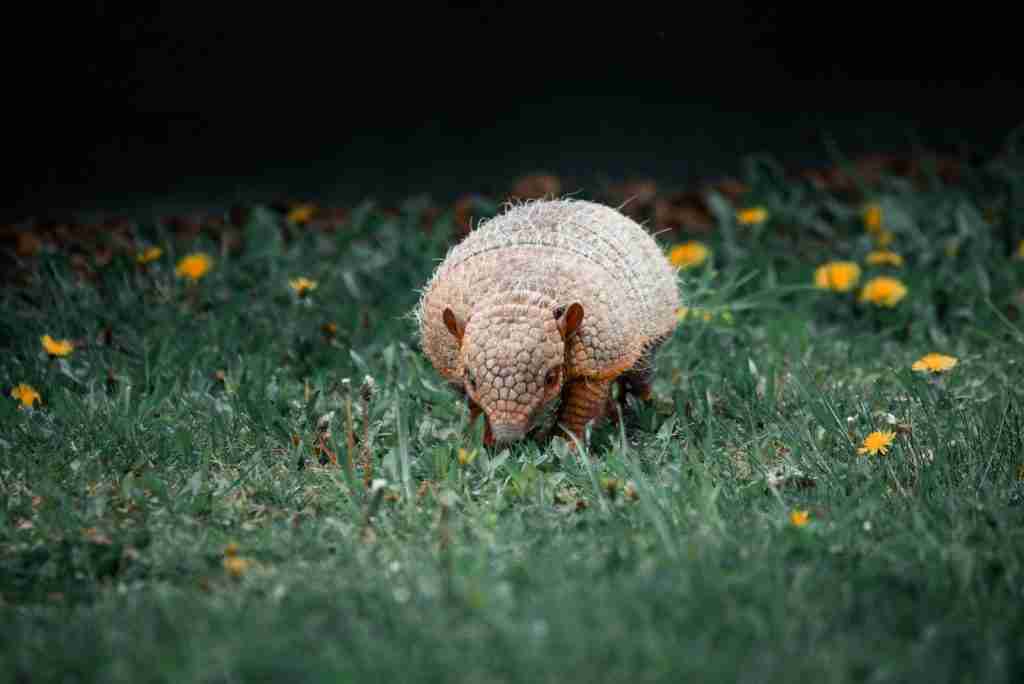
The giant armadillo, which is the largest species of armadillo, can weigh up to 120 pounds and grow up to 5 feet in length.
This species is found in South America and is considered vulnerable due to habitat loss and hunting.
17. The average armadillo is about the size of a house cat, typically measuring around 15 to 17 inches in length.
The average armadillo is approximately the size of a typical house cat, measuring between 15 to 17 inches in length. While this size can vary slightly depending on the species, most armadillos fall within this range.
Despite their compact stature, armadillos are well-adapted to their environments and possess remarkable agility and strength.
18. Armadillos sleep up to 16 hours a day in their burrows.
Armadillos are known to spend a significant portion of their day, up to 16 hours, resting in the safety of their burrows. This extended period of sleep is essential for their well-being, allowing them to conserve energy and regulate their body temperature, especially during hot daylight hours.
Armadillos create a comfortable and secure environment within their burrows, shielding themselves from predators and harsh environmental conditions.
19. Armadillos are able to walk underwater.
Armadillos are able to walk underwater by holding their breath and walking along the bottom of bodies of water.
This behavior allows them to access food sources that are underwater, such as aquatic insects and plants.
20. Armadillos have four identical babies in each litter.
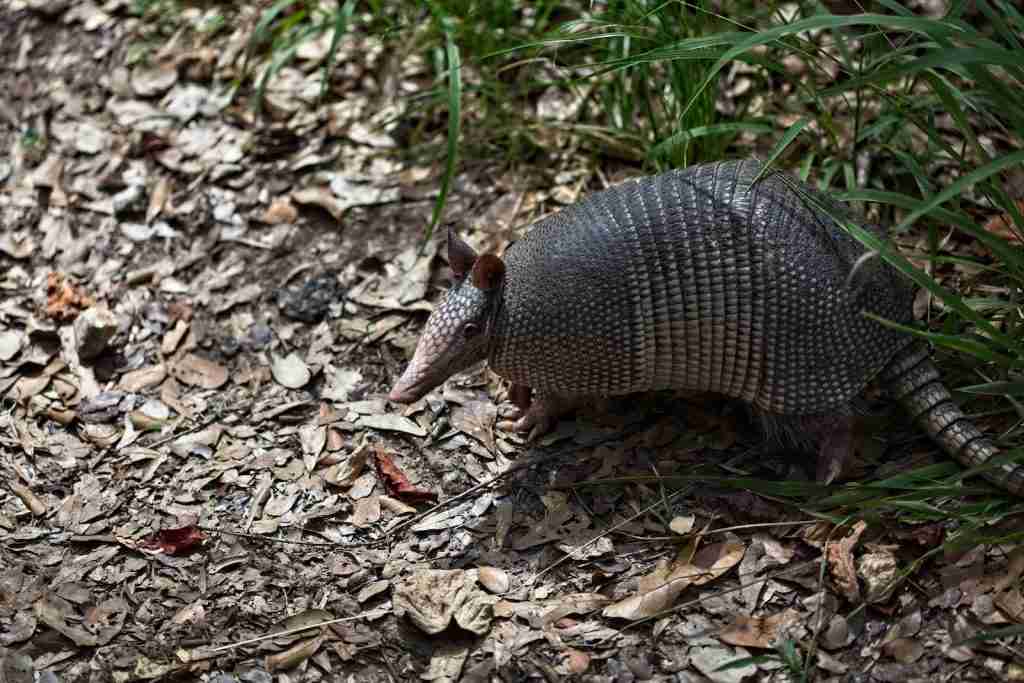
One of the unique characteristics of armadillos is that they typically give birth to four identical offspring in each litter.
This is because armadillos reproduce by monozygotic polyembryony, which means that a single fertilized egg splits into four separate embryos.
The babies, or “pups,” are born fully developed and are able to walk and eat on their own within a few days.
21. The pink fairy armadillo is the smallest species of armadillo, measuring only 3.5-4.5 inches long.
The pink fairy armadillo is the smallest species of armadillo, measuring only 3.5-4.5 inches long.
This species is found in central Argentina and has a unique appearance, with a pinkish, armor-like shell and a long, pointed snout.
The pink fairy armadillo is considered threatened due to habitat loss and hunting.
22. Armadillos mainly feed on insects such as termites, beetles, grubs, cockroaches, and scorpions.
Armadillos primarily sustain themselves by consuming a variety of insects, including termites, beetles, grubs, cockroaches, and scorpions. This insect-based diet is essential for their survival, providing them with the necessary nutrients and energy to thrive in their natural habitats.
Their keen sense of smell and sharp claws help them locate and capture prey, showcasing their remarkable foraging adaptations. By preying on insects, armadillos also play a vital role in controlling insect populations, contributing to ecosystem balance.
23. Armadillos typically have gestation periods ranging from 60 to 120 days.
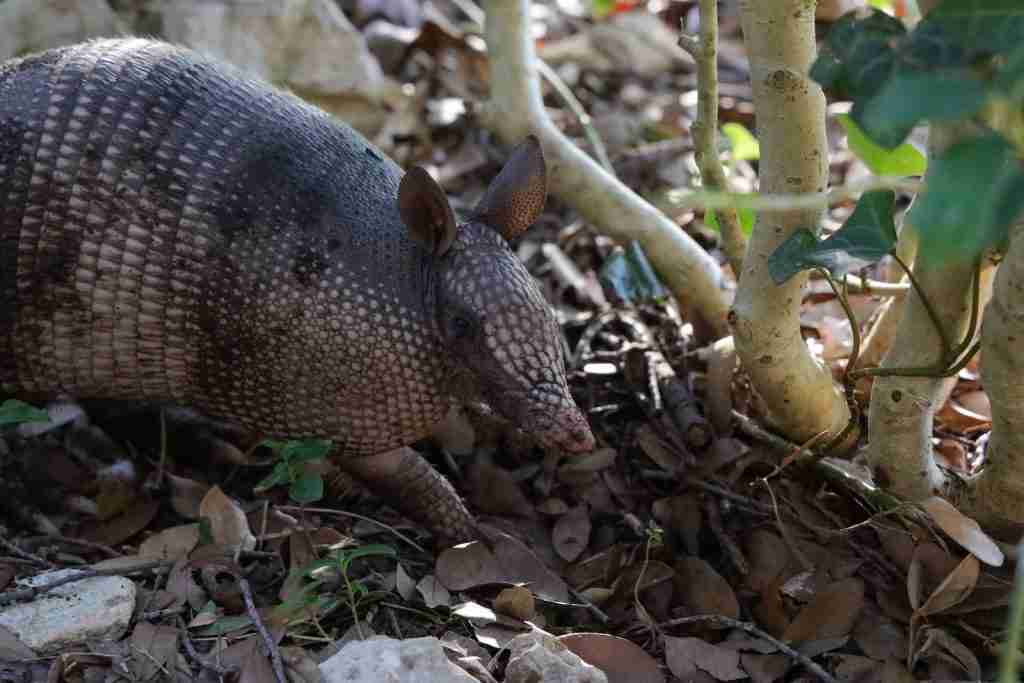
Armadillos undergo gestation periods that can span from 60 to 120 days, a timeframe that varies among different species. This period of pregnancy is crucial for the development of armadillo offspring, ensuring they are adequately prepared for birth.
The variation in gestation length reflects the diverse reproductive strategies employed by different armadillo species, adapting to their specific environmental conditions and life histories. This flexibility in gestation duration allows armadillos to optimize reproductive success in various habitats and ecological contexts.
FAQS
Armadillos are also known to inhabit urban areas and farmlands, where they can find suitable shelter and food sources. Their ability to thrive in a range of environments highlights their remarkable adaptability to different ecological conditions.
Armadillos reside in a variety of habitats, including grasslands, forests, deserts, and swamps, primarily in warm, temperate regions of Central and South America. They are also known to inhabit urban areas and farmlands, showcasing their adaptability to diverse environments.
Armadillos primarily feed on insects such as termites, beetles, grubs, cockroaches, and scorpions, using their keen sense of smell and sharp claws to locate and capture prey. Depending on availability and nutritional needs, they may also consume small vertebrates, plant matter, and carrion opportunistically.
Armadillos are generally solitary and shy animals, preferring to avoid confrontation with humans or other animals. While they are not typically aggressive, they may become defensive if they feel threatened or cornered. In general, armadillos do not seek out interactions with humans and are best admired from a distance in their natural habitat.
No, an armadillo is not a rat. While both are mammals, they belong to different taxonomic orders. Armadillos belong to the order Cingulata, while rats belong to the order Rodentia. Additionally, armadillos are characterized by their armored shells and insectivorous diets, whereas rats are known for their rodent-like appearance and omnivorous feeding habits.

